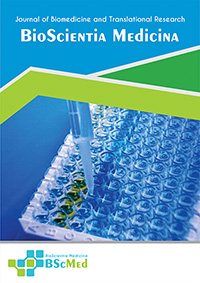Main Article Content
Abstract
ABSTRACT
Background: Type 2 diabetes mellitus (T2DM) is a multifactorial disease involving genetic and environmental factors. The E23K KCNJ11 gene polymorphism causes KATP canal overactivity, decreases cell membrane depolarization potential, and decreases insulin secretion. E23K polymorphism of the KCNJ11 gene as a risk factor for T2DM.
Research Objective: This study aimed to analyze the E23K polymorphism of the KCNJ11 gene as a risk factor for T2DM in the Bengkulu Serawai.
Method: This study is a case-control study. The subjects of the study were 100 people with T2DM patients as a case group (50 people) and Non-DM subjects with families who did not have a history of T2DM as a control group (50 people). Fasting blood glucose (GDP) was analyzed by spectrophotometry and E23K KCNJ11 gene by polymerase chain reaction fragment length polymorphism (PCR-RFLP). Data were analyzed by statistics.
Results: The frequency of AA genotypes in cases was higher than the controls (12% and 8%) (p = 0.001). The frequency of A allele in the case was higher than the control (32% and 18%) (p = 0.017). The risk of T2DM on AA / GA genotypes was 4.75 times higher in cases than controls (p = 0,000, OR 4.75 95% CI 2.01-11.24). The risk of T2DM in A allele was 2.14 times higher in cases than in controls (p = 0.017, OR 2.14, 95% CI 1.11-4.15).
Conclusion: E23K polymorphism of the KCNJ11 gene as a risk factor for T2DM in Bengkulu Serawai Tribe.
Keywords: E23K gene KCNJ11, DMT2, Non-DMT2.
Article Details
As our aim is to disseminate original research article, hence the publishing right is a necessary one. The publishing right is needed in order to reach the agreement between the author and publisher. As the journal is fully open access, the authors will sign an exclusive license agreement.
The authors have the right to:
- Share their article in the same ways permitted to third parties under the relevant user license.
- Retain copyright, patent, trademark and other intellectual property rights including research data.
- Proper attribution and credit for the published work.
For the open access article, the publisher is granted to the following right.
- The non-exclusive right to publish the article and grant right to others.
- For the published article, the publisher applied for the Creative Commons Attribution-NonCommercial-ShareAlike 4.0 International License.





